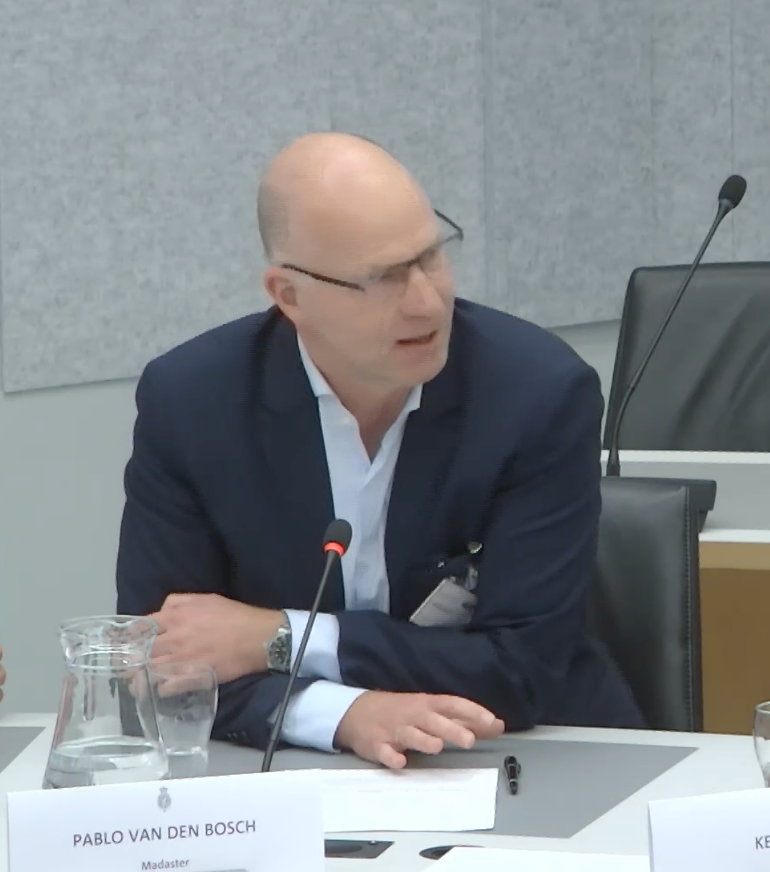FINANCING CIRCULAR BUILDING PROJECTS
If we are to leave our planet in an inhabitable state for future generations, we urgently need to treat it more sustainably than we do today. This awareness is also growing among those in the construction sector, which is responsible for about 40% of all of our waste. Developers, architects and builders are joining forces, which is leading to a growing number of exciting circular building projects. We asked Anke Verhagen, Business Developer Sustainability and Circular Economy – Real Estate Finance at Rabobank, how these types of projects are financed and whether there is such a thing as ‘circular financing’. She deals with sustainability in the built environment in the broadest sense of the word. This includes the energy transition and circularity and, increasingly, also climate adaptive construction and health.IN YOUR OPINION, WHAT IS A CIRCULAR CONSTRUCTION PROJECT?
Circular construction projects can be achieved in various ways, using second-hand or biobased materials or applying circular design that includes, for example, the degree to which certain elements can be dismantled or disassembled. We also see new business models around ownership and control of the materials used. At the very least, we should pursue construction practices according to which buildings are developed and executed with the use and reuse of materials without unnecessarily depleting natural resources, polluting the living environment or causing damage to ecosystems. This means building in a way that is economically responsible and contributes to the welfare of people and animals — here and elsewhere, today and in the future.HAVE YOU NOTICED AN INCREASE IN APPLICATIONS FOR THE FINANCING OF CIRCULAR CONSTRUCTION PROJECTS, IN RECENT YEARS?
Yes, we have; more and more parties are including circularity in their building projects, in a variety of ways, as also described above.WHAT ARE THE DIFFERENCES BETWEEN TRADITIONAL AND CIRCULAR CONSTRUCTION PROJECTS WHEN IT COMES TO FINANCING SUCH PROJECTS?
Well, at Rabobank, a circular construction project is essentially no different from a ‘traditional’ construction project other than its use of different materials or design principles. The circular projects may lead to other types of costs or other involvement of multiple parties than is common in more traditional projects. In the case of such other business models — for example, the ‘Facade as a Service’ — a different risk assessment or financial structure may be required. For instance, when the estimated salvage value of a building’s facade is taken into account.ARE CIRCULAR CONSTRUCTION PROJECTS MORE ATTRACTIVE THAN REGULAR CONSTRUCTION PROJECTS TO FINANCIERS?
Building projects are, of course, not only judged on whether they are circular or not; other aspects also play a role. We look at the people involved, at their level of experience and at whether they work with reliable and qualified third parties. Also important is who will become the user of that particular property, whether the building will have a positive impact on its location, whether it transforms or preserves cultural industrial heritage, and so on. Overall, however, sustainable building projects that lead to future-proof real estate do have our special attention. We believe that these developments are the future and that they are necessary if we are to achieve our climate targets, make the world more sustainable and provide opportunities for joint learning. Circular building projects should, specifically, lead to real estate that will also have a second and third life and will be a repository of building materials for the future. These are all positive points. For the benefit of such projects, we are willing to go the extra mile, to see how we can contribute. This may be in the form of knowledge or our network or consist of financing.DOES THIS ALSO TRANSLATE INTO FINANCIAL ADVANTAGES OR MORE FAVOURABLE PRECONDITIONS?
Rabobank likes to reward front runners. This can take the shape of a financial advantage or more favourable preconditions. However, this is always assessed with the broader context of the client and the development in mind. For applications of more than EUR 1 million, at Rabobank, we also include sustainability performance in our assessment of the financial possibilities, using our own standardised system which is based on objective sector-specific criteria. In the future, we expect to be able to develop this also for SMEs, and as far as possible based on data-driven objective criteria that are also used by the sector itself. We see that more sustainable companies are also performing better, financially. We, therefore, expect this to become an increasingly recurring element of the preconditions of financing, in which risk and return including sustainability will play a role.CIRCULAR BUILDING PROJECTS ARE INCREASINGLY BEING COMPLETED WITH A MATERIAL PASSPORT, WHICH RESULTS IN HEALTHIER BUILDINGS, A SAFER ENVIRONMENT FOR THE USERS AND HIGHER FINANCIAL RETURNS. THINK OF PROACTIVE AND COST-EFFICIENT MANAGEMENT AND MAINTENANCE BASED ON ACCURATE DATA EXCHANGE WITH SUPPLIERS.
MATERIAL PASSPORT: THE BEST-KNOWN DIGITAL TWIN
A passport provides an identity. The material passport, thus, provides an identity to materials and products through all the recorded characteristics of the material or product in question. Digital material passports enable a more efficient management of materials and products. In this way, we have insight into their characteristics, such as composition, origins and size, as well as the price and location within an object (e.g. building), or the type of impact they may have on human health, without requiring the physical presence of such materials and products. In addition, the registration of materials and products also prevents them from ending up as waste and becoming lost in anonymity.MATERIAL PASSPORTS, IN ADDITION, CONTAIN A LARGE AMOUNT OF INFORMATION ABOUT THE COMPOSITION OF A BUILDING (I.E. THE COLLATERAL) AND PROVIDE RELATED INSIGHTS INTO THE FINANCIAL SALVAGE VALUE OF THE MATERIALS. INFORMATION THAT IS INTERESTING WHEN ASSESSING A FINANCING APPLICATION.
This is potentially interesting information for a bank when assessing collateral more broadly, but more experience is still needed. The salvage value, for example, must be determined by a specialist. Which parameters apply? What timeframe can and needs to be considered? We need to work together with fiscal specialists, accountants, assessors and, of course, legislators and regulators. Last year, Deloitte published its report ‘C8 | Van Vastgoed naar Losgoed‘, which states that the salvage value of materials and products can be entered on property owners’ balance sheets. This will enable them to improve their solvency ratios and, therefore, the risk declines in the eyes of financiers.TO WHAT EXTENT DOES THE REDUCED RISK AFFECT THE PRECONDITIONS OF FINANCING?
With real estate financing, we look at the specific property as well as at the balance sheet of its owner. The salvage value of building materials, however, is often not known and thus not always taken this into account. So, even though the above is very interesting, it will make little difference in our current assessments. We simply have an insufficient amount of experience in including salvage value and, therefore, there is no definitive way of dealing with this aspect in our current financing and assessment processes.WHAT WOULD BE NEEDED TO MAKE THE FINANCING OF CIRCULAR CONSTRUCTION PROJECTS SIMPLER AND MORE ATTRACTIVE?
What is needed is a broader insight into the value represented by a circular construction project. The investment costs and recurring costs related to the development should not be the only elements we look at; salvage value and the external positive or avoided negative effects should also be taken into account and monetised — and thus included in the business case. Ideally, this would then translate into a more positive valuation. We are not there yet, and we are dependent on the aforementioned parties, but, as far as I am concerned, this is the way forward. Think of approaches such as Total Cost of Ownership or Total Benefit of Ownership.CAN WE AFFORD THE TIME INVOLVED IN ACHIEVING SUCH MONETISATION?
I would rather look at this the other way round: without monetising the benefits during a property’s period of exploitation and without a better understanding of the salvage value, circularity may not accelerate rapidly enough. Providing financial insight into the benefits is needed to obtain the necessary support from the majority of the market. Although 20% will probably already become actively involved, the remaining 80% will need more practical encouragement.WHAT IS RABOBANK’S ROLE IN THE TRANSITION TOWARDS A CIRCULAR ECONOMY, BOTH TODAY AND IN THE FUTURE?
We help clients with knowledge, network and financing to arrive at circular construction projects or to make progress in the circular construction economy. We do this with the experts of the Rabo CE Desk and our Circular Opportunity Maps, client programmes such as the Circular Economy Challenge, Circular Entrepreneurship in 1 Day and Circo Tracks, as well as a number of specific attractive products such as the innovation loan (Rabo Innovatielening) and the impact loan (Rabo Impactlening). We are also organising competitions, such as the Rabo Innovation Challenge especially for the construction sector, or the sustainable innovation award (Rabo Duurzame Innovatie prijs) for the whole of the Netherlands, to stimulate entrepreneurs to innovate.Join our movement today, start preserving value
View all



